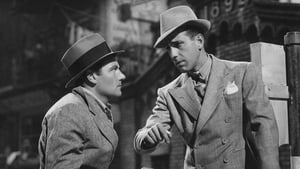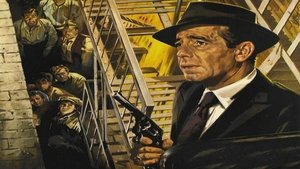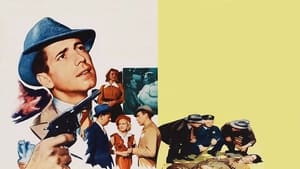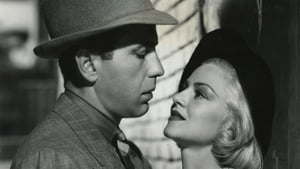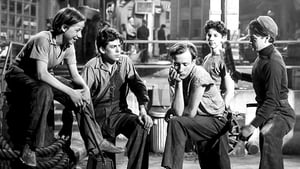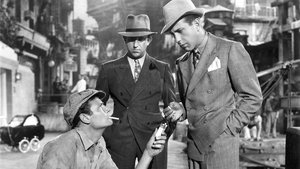Contact: info@alwanfilm.com
Video Sources 0 Views
- Watch trailer
- Dead End


Synopsis
Table of Contents
ToggleReview: Dead End 1937 Colorized – A Gritty Urban Drama Revived in Vivid Color

Introduction
“Dead End” (1937) stands as a compelling exploration of societal divides and the human condition against the backdrop of a gritty urban landscape. In this review, we’ll delve into the significance of this early colored film, examining its impact on audiences and its enduring relevance in the realm of urban drama.
Check The Full Colorized Movies List
Check Our Colorized Movies Trailer Channel
Understanding Dead End 1937 Colorized: Director, Cast, and Genre
Directed by the visionary William Wyler, “Dead End” (1937) showcases his keen eye for detail and his ability to capture the complexities of human relationships on screen. The film features a stellar ensemble cast, including Sylvia Sidney, Joel McCrea, and Humphrey Bogart, whose performances breathe life into the gritty streets of New York City. Blending elements of crime, drama, and social commentary, “Dead End” (1937) offers viewers a raw and unflinching look at the harsh realities of urban life during the Great Depression.
Exploring the World of Dead End 1937 Colorized: Plot and Characters
Set in the slums of New York City, “Dead End” (1937) follows the intersecting lives of various residents living in a tenement building, from struggling families to hardened criminals. Against this backdrop of poverty and despair, the film delves into themes of class struggle, disillusionment, and the quest for redemption. Through its richly drawn characters and evocative storytelling, “Dead End” (1937) invites viewers to confront the harsh realities of life on the margins of society and the indomitable human spirit that perseveres against all odds.
The Art of Film Colorization
Film colorization serves as a transformative tool that enhances the visual experience of classic movies, breathing new life into timeless stories and captivating audiences with vibrant hues. By digitally adding color to black and white films, colorization allows viewers to immerse themselves in the rich tapestry of cinematic worlds, exploring every nuance and detail with fresh eyes and renewed appreciation.
Early Colored Films: A Brief History
The history of colored films traces its roots back to the early days of cinema, with filmmakers experimenting with various techniques to add color to their creations. From hand-tinted frames to early Technicolor processes, the evolution of colored film has been marked by innovation and ingenuity, paving the way for the development of modern colorization techniques that continue to captivate audiences to this day.
Dead End 1937 and Its Early Colored Version
The decision to release “Dead End” (1937) in a colorized format was met with both anticipation and apprehension. While some welcomed the opportunity to experience the film in vibrant color, others expressed concerns about the potential impact on its visual aesthetic. Nevertheless, the early colored version of “Dead End” (1937) offers viewers a fresh perspective on the timeless tale of urban strife and societal decay, enhancing its emotional resonance and captivating audiences with its luminous beauty.
The Debate Over Film Colorization
The debate over film colorization continues to divide audiences and critics alike, with proponents praising its ability to breathe new life into classic movies and introduce them to a new generation of viewers, while detractors argue that it compromises the artistic integrity of the original work and diminishes its historical significance. As the debate rages on, filmmakers and audiences alike are left to ponder the merits and drawbacks of colorization in the ever-evolving landscape of cinema.
Examining Dead End 1937 as an Early Colored Film
As with any colorized classic, the impact of colorization on “Dead End” (1937) is a matter of personal interpretation. Some may argue that it enhances the film’s visual appeal and immerses viewers in its world, while others may feel that it detracts from the stark beauty of the original black and white version. Regardless of one’s stance on the issue, there’s no denying the enduring power of “Dead End” (1937) as a timeless urban drama that continues to resonate with audiences around the world.
Influence and Legacy: Dead End 1937 Colorized’s Impact on Cinema
“Dead End” (1937) has left an indelible mark on the world of cinema, inspiring countless filmmakers and captivating audiences with its raw portrayal of urban life. From its unforgettable performances to its gritty cinematography, the film continues to resonate with viewers of all ages, reaffirming its status as a beloved classic of the urban drama genre.
Director’s Cinematic Legacy: Beyond Dead End 1937 Colorized
William Wyler’s influence extends far beyond “Dead End” (1937), with a diverse body of work that continues to captivate audiences around the globe. From “The Best Years of Our Lives” to “Ben-Hur,” Wyler’s films are celebrated for their emotional depth, compelling characters, and timeless themes, solidifying his legacy as one of the greatest directors in Hollywood history. Through his groundbreaking work, Wyler has left an indelible imprint on the world of cinema, inspiring generations of filmmakers to follow in his footsteps.
Themes Explored in Dead End 1937 Colorized
“Dead End” (1937) explores a myriad of themes, from poverty and crime to hope and redemption. Through its unflinching portrayal of urban decay and societal injustice, the film invites viewers to confront the harsh realities of life on the margins of society and the indomitable human spirit that perseveres against all odds. As audiences immerse themselves in the world of “Dead End” (1937), they are reminded of the universal truths that bind us together and the enduring power of resilience in the face of adversity.
Reception and Controversy Surrounding Dead End 1937 Colorized
Upon its release, “Dead End” (1937) received widespread critical acclaim, with many praising its gritty realism, powerful performances, and uncompromising social commentary. However, the decision to release the film in a colorized format sparked debate among purists, reigniting the age-old discussion surrounding film preservation and artistic integrity. Despite the controversy, “Dead End” (1937) remains a beloved classic that continues to resonate with audiences of all ages, reaffirming its status as a timeless masterpiece of the urban drama genre.
Where to Watch Dead End 1937 Colorized Online
For those eager to experience the timeless magic of “Dead End” (1937), the film is readily available on popular streaming platforms such as Netflix, Amazon Prime, and Hulu. Whether you choose to watch it in its original black and white format or the early colored version, “Dead End” (1937) promises to transport you to a world of urban strife and societal decay, where the human spirit shines brightest in the darkest of times.
FAQs About Dead End 1937 Colorized
Q: Is “Dead End” (1937) based on a true story? A: No, “Dead End” (1937) is a fictional tale crafted by screenwriter Lillian Hellman, who drew inspiration from her own observations of urban life during the Great Depression.
Q: Who are the main actors in “Dead End” (1937)? A: “Dead End” (1937) features an ensemble cast led by Sylvia Sidney, Joel McCrea, and Humphrey Bogart, whose performances bring the gritty streets of New York City to life with raw emotion and intensity.
Q: What awards did “Dead End” (1937) win? A: While “Dead End” (1937) did not win any major awards, it received critical acclaim for its powerful performances and uncompromising social commentary.
Q: Why was “Dead End” (1937) released in a colorized format? A: The decision to release “Dead End” (1937) in color was made to introduce the film to a new generation of viewers and enhance its visual appeal for modern audiences. While the choice to colorize the film sparked debate among purists, it ultimately allowed “Dead End” (1937) to reach a wider audience and ensure its continued relevance in the annals of cinematic history.
Conclusion
“Dead End” (1937) remains a powerful testament to the resilience of the human spirit in the face of adversity, offering viewers a raw and unflinching portrait of urban life during the Great Depression. Whether viewed in its original black and white format or the early colored version, the film continues to captivate audiences with its gripping storytelling, unforgettable performances, and uncompromising social commentary. As we reflect on its enduring legacy, let us celebrate “Dead End” (1937) as a timeless masterpiece that continues to resonate with viewers of all ages, reaffirming its status as a classic of the urban drama genre.
